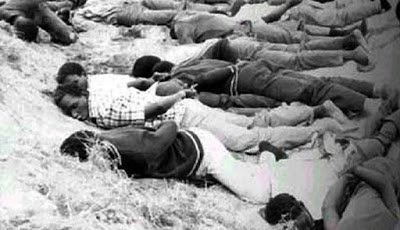Elizabeth
Duve Dziva
Duve Dziva
Agnes
De Mille once said bodies never lie, the truest expression of a people is in
dance. Dance symbolises elementary values
to our culture, our nation, tradition, spirituality, history and children. It
is one of the most authentic and reliable source of history for with it comes
an undistorted story. Dance is a strong magic, its telling a story without a
voice. Each movement sums up moments and experiences. Cultural dancers are
story tellers, they tell a story in every movement and sequence of their dance.
Every cultural dance has a story that needs to match the theme of the dance. Literally,
there is no cultural dance without a story.
De Mille once said bodies never lie, the truest expression of a people is in
dance. Dance symbolises elementary values
to our culture, our nation, tradition, spirituality, history and children. It
is one of the most authentic and reliable source of history for with it comes
an undistorted story. Dance is a strong magic, its telling a story without a
voice. Each movement sums up moments and experiences. Cultural dancers are
story tellers, they tell a story in every movement and sequence of their dance.
Every cultural dance has a story that needs to match the theme of the dance. Literally,
there is no cultural dance without a story.
The
beauty of dance is that even if you want to know what the dancers are trying to
express, you do not need to know a particular spoken language, it is merely
body language. It tells us something about people’s beliefs, feelings and
ancestry. Dance is not simply body
language but has many theoretical definitions. As a matter of fact it is an
emotional movement with a strong meaningful moment and signifies a people’s uniqueness.
beauty of dance is that even if you want to know what the dancers are trying to
express, you do not need to know a particular spoken language, it is merely
body language. It tells us something about people’s beliefs, feelings and
ancestry. Dance is not simply body
language but has many theoretical definitions. As a matter of fact it is an
emotional movement with a strong meaningful moment and signifies a people’s uniqueness.
Cultural
dances are so valuable to various societies as they often carry pieces of their
history and livelihood that would otherwise be lost. A dance is a common language
that unites people at the same level. There are various dances in Zimbabwe
which vary according to ethnic diversity; some may have slightly changed due to
the dynamics of time. Among them are vast traditional dances which are very
powerful and meaningful. These include the Mbira dance which is accompanied by
a thumb piano (mbira instrument).
dances are so valuable to various societies as they often carry pieces of their
history and livelihood that would otherwise be lost. A dance is a common language
that unites people at the same level. There are various dances in Zimbabwe
which vary according to ethnic diversity; some may have slightly changed due to
the dynamics of time. Among them are vast traditional dances which are very
powerful and meaningful. These include the Mbira dance which is accompanied by
a thumb piano (mbira instrument).
It
is religious in nature and is meant to summon ancestral spirits to come through
mediums. There is the Dinhe dance which carries a lot of war movements and also
has to do with inviting ancestors and agricultural fertility. Mbakumba dance is
performed after harvest and Muchongoyo was performed by the Ndebele men in preparation
for war or after war.
is religious in nature and is meant to summon ancestral spirits to come through
mediums. There is the Dinhe dance which carries a lot of war movements and also
has to do with inviting ancestors and agricultural fertility. Mbakumba dance is
performed after harvest and Muchongoyo was performed by the Ndebele men in preparation
for war or after war.
Jerusarema
(mbende) dance which goes along with drums and rattles was traditionally a
symbol of fertility, sexuality and family but today can be performed at various
gatherings. Mhande dance is usually performed at kurova guva ceremony bringing back a deceased person’s sprit and is
usually done by the Shona people. Isitshikitsha is a Ndebele dance which was
traditionally performed for the king’s pleasure and was also performed at
Njelele for rainmaking ceremonies during droughts. Among the vast dances are shangara,
jiti-chinungu, zihwere, chimutare, ingwenyama, mmabhiza, ingquza, chinyobera, ngungu
among many traditional dances which vary according to ethnic groups.
(mbende) dance which goes along with drums and rattles was traditionally a
symbol of fertility, sexuality and family but today can be performed at various
gatherings. Mhande dance is usually performed at kurova guva ceremony bringing back a deceased person’s sprit and is
usually done by the Shona people. Isitshikitsha is a Ndebele dance which was
traditionally performed for the king’s pleasure and was also performed at
Njelele for rainmaking ceremonies during droughts. Among the vast dances are shangara,
jiti-chinungu, zihwere, chimutare, ingwenyama, mmabhiza, ingquza, chinyobera, ngungu
among many traditional dances which vary according to ethnic groups.
Today,
there are new dances like museve, bum jive, gwara gwara, house dance and break
dancing among many contemporary dances which are emanating. Apparently, they
carry no known connotative meaning than mere entertainment. Nonetheless our
generation should do nothing but to embrace them and try to pass them over generations.
Societal growth is inevitable and with growth comes change and such aspects
like new dances are unavoidable.
there are new dances like museve, bum jive, gwara gwara, house dance and break
dancing among many contemporary dances which are emanating. Apparently, they
carry no known connotative meaning than mere entertainment. Nonetheless our
generation should do nothing but to embrace them and try to pass them over generations.
Societal growth is inevitable and with growth comes change and such aspects
like new dances are unavoidable.
There
is need to preserve cultural dances for they connect us directly from the present
to the past. The onus is upon us to
preserve the joyful body movements we have inherited from our ancestors and
those that we are inventing and pass them to our successors as they were passed
to us.
is need to preserve cultural dances for they connect us directly from the present
to the past. The onus is upon us to
preserve the joyful body movements we have inherited from our ancestors and
those that we are inventing and pass them to our successors as they were passed
to us.
Elizabeth Duve
Dziva is an Archaeological and cultural heritage practitioner, the views and opinions expressed
in this article are purely the author’s in her own capacity unless stated otherwise. They do not
necessarily represent the views of any organization. Email:
du***********@gm***.com
Dziva is an Archaeological and cultural heritage practitioner, the views and opinions expressed
in this article are purely the author’s in her own capacity unless stated otherwise. They do not
necessarily represent the views of any organization. Email:
du***********@gm***.com
.







